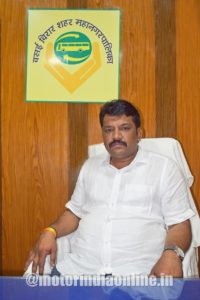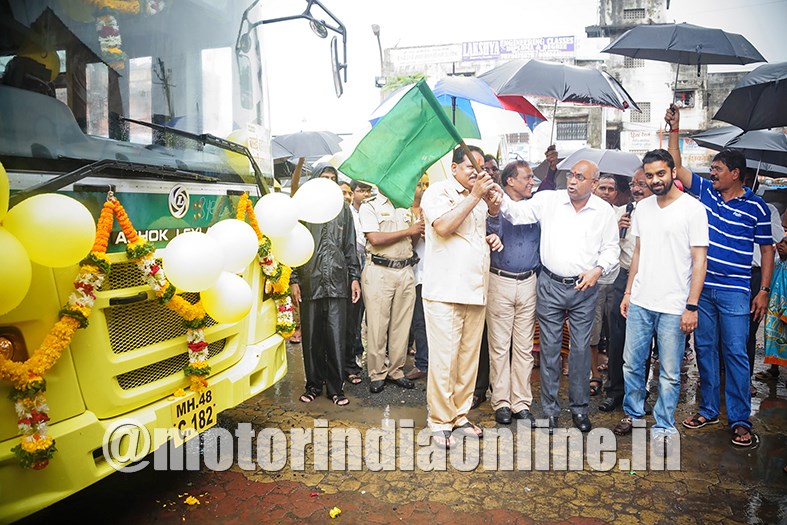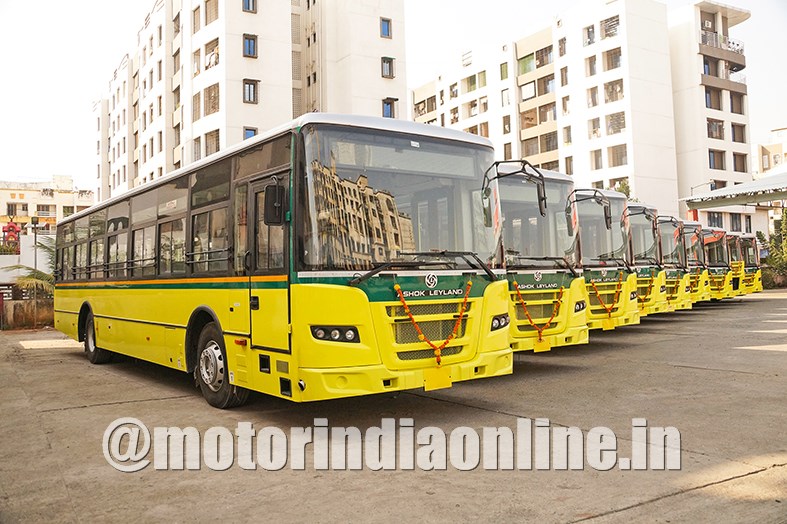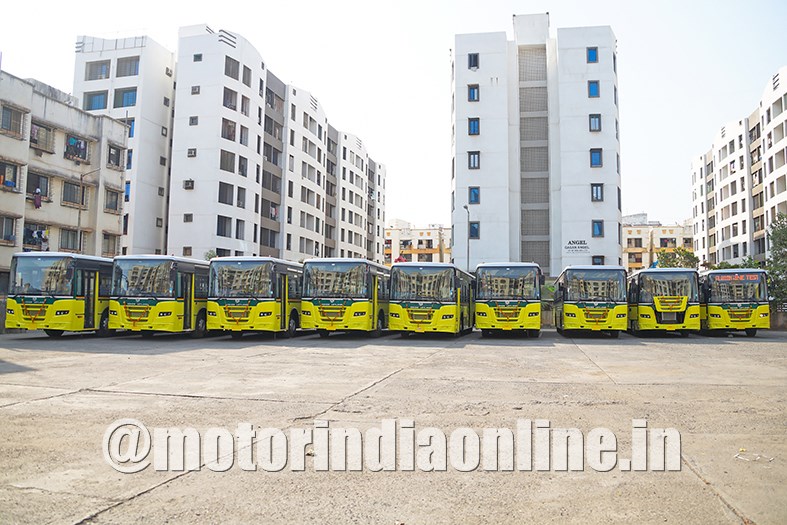The Vasai Virar City Municipal Corporation (VVCMC) that was formed on July 3, 2009, started the Vasai Virar Transport Service (VVTS) on October 3, 2012. The fleet service provider started with its own fleet of 30 buses and added another 30 under the JNNURM scheme. With able leadership of the then MLA Hitendra Thakur and President of Bahujan Vikas Aghadi, VVTS paid attention to the potential of fleet operation and management early on and has realised its ambition to provide transport services at affordable prices, within the first three years of the corporation.

Determined to provide transport services and also expand operation, the corporation inked a partnership with Bhagirathi Transport Corporation Pvt. Ltd. (BTCPL) in 2012, in order to bring in experience, efficiency and accountability. The decision paved way for several route expansions and diligent operations across the region and also earned them the distinction of being the first municipal corporation in the country to have started the transport service within three years of formation. “This would not have been possible without the vision of our popular leader Shri Hitendra Thakurji and systematic management by the Mayor, Ex-Mayor, Deputy Mayors and the Transport Committee,” said Mr. Pritesh Patil, VVTS Chairman.
Operation and fleet
As of today VVTS has got 160 buses (VVMC 30 & BTCPL 130) with a mix of fleet from Tata, Eicher, Ashok Leyland and SML. They operate with one depot and six bus stations across the Vasai-Virar region. “The operation has 43 routes covering Vasai, Virar, Nallasopara and Naigaon and even connects Thane and Mulund. Mulund being the last station in Mumbai’s suburb is closer to the Vasai-Virar region from Thane-Ghodbunder road and hence it is one of the important services of VVTS,” informed Mr. Patil. (refer to the box at the end for route details)
The VVTS fleet consists of a good mix of 10 Tata LP 409 with 18-seater capacity, 74 25-seater buses from the stable of SML, Eicher 10.75 and Tata LP 712 and good 76 medium to big size buses (35-45 seaters) from Tata, Eicher and Ashok Leyland. VVTS realised that the vehicle and tyre maintenance are key for good fuel efficiency and consistent growth. Its well-maintained vehicles have delivered 3.8 km/l, a commendable figure given the frequent on road movements the buses take. It has also been able to maintain the daily vehicle operation consistently at 180-200 km over the years. Such optimum utilization of vehicles is the key for a steady flow of income to keep pace with the expenditure.
Mr. Patil added: “The main reasons for this performance are timely vehicle and tyre maintenance and the use of only standard spares and tyres. We have a regular service schedule with routine checks, and a special maintenance after every 2,000 km of running. After every 100,000 km the buses are sent to workshops for comprehensive service of the main aggregates.”
True to its nature the VVTS services are for offering frequent commuting option to the people of the region. In order to ensure that enough people get the benefits of its services, the corporation rolls out many schemes. It has been offering free rides to all the school and college going students in its region. Apart from this, they offer rides at 50 per cent ticket rates to senior citizens and differently abled. “Nearly 8,500 students from 49 aided schools under the corporation have been taking benefits of this scheme, and this number is only to grow as the population of this region increases,” revealed Mr. Patil. Currently the minimum fare for a short distance trip is Rs. 7 and the maximum ticket fare is Rs. 56.
Growth & expansion
Undoubtedly, VVTS is growing. From 30 buses in 2012 to 160 buses the corporation has left no stone unturned. “To further meet passenger demand and comfort convenience our bus fleet will be expanded to 200 by next one year. We have also invested in bus queue shelters, GPRS, for the convenience and safety of the passenger. Further, our party’s MLA from Nallasopara, Shri Kshitij Thakur, has envisioned the development of the ring road connecting all the regions of Virar, Nallasopara and Vasai which will accelerate the movement of passengers in the region. He has also been mulling over the plans to start buses running on electric and solar power,” said Mr. Patil.
Another important aspect that is crucial to sustained growth and expansion is drivers. One cannot neglect the role of experienced drivers who are an equally important cog of the wheel in transport services. “As per Government rules all our drivers have a minimum of three years of heavy vehicle driving experience and are recruited by BTCPL. They are given know-how of the routes and duties on joining as well as every time the shift changes. At present we have got 325 drivers on BTCPL’s pay roll. We also give certificates and monetary incentives to the drivers for their best performance on October 3 (inaugural day of VVMTC) to keep them engaged for the cause and motivated,” he disclosed.
Meanwhile, VVTS also has been using e-ticketing machines since its inception in 2012 which have helped cut revenue leaks to a great extent. Another important development it is working on is a complete shift to a ground plus seven-storey ‘Parivahan Bhavan’ (Transport Building) at Virar West. “Several factors like route timings (schedule for arrival and departure of each bus), maintenance and services can be monitored at one place, which should greatly help better the performance of the corporation,” beamed Mr. Patil.
BTCPL which runs the entire operation clocked a revenue of approximately Rs. 41 crores in 2018-19 and is expecting approximately Rs. 55 crores for 2019-20. With increase in passenger traffic and introduction of new routes such as in the industry belt of Vasai East, Nallasopara and Virar East and start of fully ladies’ special buses during peak hours will see them achieve the revenue target they estimate. However, the operational cost is also sure to increase further, given they already required around Rs. 46 crores (including fuel & tyre cost) in 2018-19.
Apart from the buses, the corporation also has invested in 30 trucks and pick-ups under the VVCMC Fire Station. “We have water tender, foam tender, rescue tender, turntable ladder of 40-meter height, water bowser, mini water tender, quick response tender, water bowsers with monitor, firefighting equipment loaded on two wheelers and jeep. Some of these equipments are perhaps even not available with the Mumbai Corporation,” he signed off.


